In order to empower people on some level, you first need to engage them. It is nearly impossible to create a culture of learning if there are elements of boredom, inactivity, and lack of relevance. This is a lesson I learned most recently as a presenter and workshop facilitator. Early on, I used more traditional strategies since this was a new arena for me. The shift from principal to full-time consultant brought a certain amount of fear, and I reverted back to what I was comfortable with in terms of what I could control and perceive that educators wanted. I basically became the sage on the stage and a master of direct instruction with little participant interaction.
(more…)School of Thought Blog

Overcoming Engagement Hurdles With Remote Learners
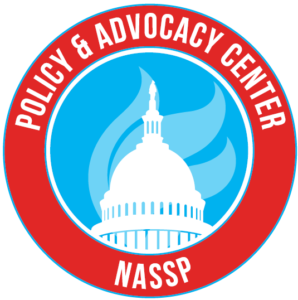
End of the Year Blog: Budget Deal and COVID-19 Relief Passed at the 11th Hour
It has been a long time coming, but congressional leaders and the White House were able to agree on a massive legislative package that included all the FY 2021 appropriations bills and a $900 billion COVID-19 relief proposal. Passed by Congress and signed by President Trump on Monday, December 21, the bill contains desperately needed funds to support schools as they continue to navigate the ongoing pandemic.
(more…)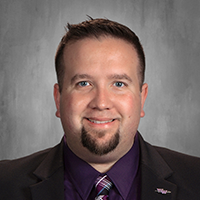
Control+Alt+Delete: Rebooting Our Minds During Remote Learning
School as we knew it has changed, and we are sailing in a different direction. We once worried about students being late for classes and missing assignments, but now our concerns involve students being quarantined and missing instruction with a cloud of COVID-19 fear hovering over their heads. Things are different, there is no doubt about it. It is time we reboot our minds when it comes to remote learning and truly focus on what matters most in any form of learning—community and relational trust.
(more…)Remote Support of Principal Supervisors ‘Not Different’ From Pre-COVID Times
Ask the experts: Three questions about principal supervisors and how they can best support principals now
Reprinted with permission of The Wallace Blog.
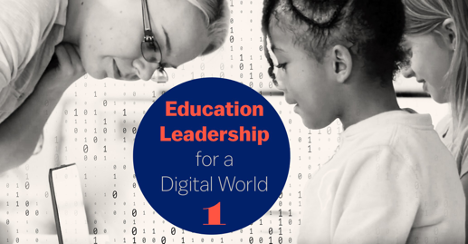
Last spring, the role of the principal changed overnight and continues to evolve. As the pandemic took hold, principals almost immediately shifted from leading a school within a building to leading virtual schools. Principal supervisors had to pivot, too.
(more…)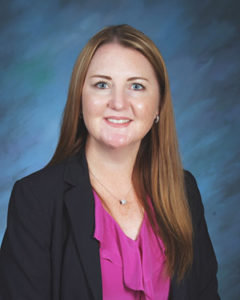
Creating a High-Energy Culture of Innovation
If you’ve ever seen the movie Remember the Titans, you may know this quote: “Attitude reflects leadership.” As a school principal for over a decade, this quote is one I choose to keep close to my heart, embedded in my deep belief of servant leadership. I know the way I choose to lead will make or break the critical work that needs to be done on a daily basis in my school.
(more…)
Patience and Principal Leadership
Two lions, one young and one old, are peering down over the pride at some antelope. The younger, more inexperienced lion shifts from side to side, eager to pounce on the prey for a meal. She leans over to the grizzled veteran lion and eagerly implores, “Let’s run down this hill and eat those antelope!” The wise lion doesn’t move. She slowly turns her head and says, “No. We are going to walk down this hill and eat those antelope.”
(more…)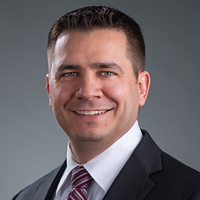
Note Cards: A 3×5 Teachable Moment
Some things go with the territory of being a teacher: sticky notes, colored pens, and the preferred brand of stapler. Those of us who have been teachers could effortlessly rattle off the list of things we need to make our systems run. One of my must-haves as a teacher was the standard 3 1/2 by 4 7/8-inch note card. With one blank side and the other lined, they were perfect for gathering essential information on students, at least in the days of low technology. Quickly and concisely, I could collect all the important information I needed for the year within a few minutes, but the note cards also taught my students—and myself—important lessons.
(more…)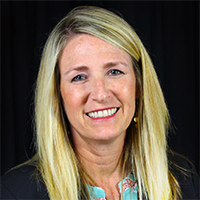
What Drives Your Engine? Social Media Timelines and Goal Setting
Recently, I’ve been holding individual meetings with our new educators at our school. We’ve hired some phenomenal teachers this year, and while I’ve visited their classrooms and had a few conversations here and there with them, I still was left wanting and needing to know them better personally and professionally.
(more…)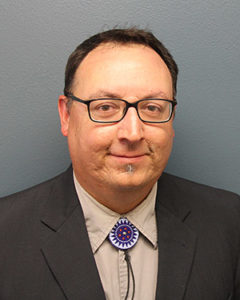
Heeding Early Warning Signs to Keep Students on Track for Graduation
As we make our way through these unprecedented COVID times, it is all the more important to keep kids on the path to graduation as best we can. We’ve seen and heard the horror stories of students losing credits, failing classes, and falling behind while in quarantine last spring. Whether it be the format, lack of skills, or support at home, we still need to do our best to help those students.
(more…)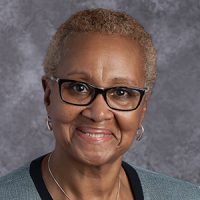
Middle Level on a College Campus: A Winning Partnership
When you think of the middle level years, you immediately envision awkward physical transitions, acne, loud voices, and quirky attitudes. Then when you picture college, you see young people who are approaching adulthood, finding themselves, and ambitious about their futures. Now put these two together and you have an unlikely partnership that creates amazing opportunities. That is the Howard University Middle School of Mathematics and Science. Being on the campus of a historically Black university helps our students appreciate their identity and think about what it means to be successful in college. Our Virtual Tour on December 8 will focus on how we work with our students to develop habits of success that include goal setting and self-directed learning.
(more…)What Principals Can Learn From ‘Cobra Kai’
The coronavirus pandemic has taught us all a lot, including a greater appreciation for the little things, like Netflix. With this new appreciation, I came across a TV series I may have skipped over pre-COVID: “Cobra Kai.” It might sound vaguely familiar to any of us old enough to remember the iconic 1984 movie “Karate Kid,” with Danny LaRusso as the New Jersey-born city boy who finds karate and a mentor, Mr. Miyagi, to help him acclimate to life in Los Angeles. Even if you never watched it, don’t remember it, or just were not interested, I believe there are plenty of leadership and life lessons to be gleaned from the series. (more…)
NASSP Works With Congress to Curb Educator Job Loss
As the dust from the election continues to settle, many in Congress have begun to turn their attention back to addressing the ongoing COVID-19 pandemic and its impact on schools. There is renewed hope for a new COVID-19 relief package following Senate Majority Leader Mitch McConnell’s (R-KY) recent call for legislation to be passed before the new year. While a relief package is still necessary and would help address some of the more immediate needs of schools as they navigate what are sure to be difficult winter months, policymakers are also working on legislation aimed at addressing educator job loss due to budget cuts, health concerns, and other problems stemming from the pandemic. (more…)
NASSP Presents DonorsChoose Grants for Exceptional NPM ‘Shadowing Visits’ With Lawmakers
Every year during National Principals Month (NPM), NASSP encourages principals to host “shadowing visits” with members of Congress, state and local elected officials, and other community leaders. Shadowing visits are a key part of our advocacy strategy for one simple reason: they work. We’ve seen time and again the transformative impact that getting a lawmaker into a school setting can have as principals show them the needs of today’s students and educators. You have the power to win their support for the causes we all believe in, and we want you to use it! (more…)
Strengthening Systems of Support to Increase Academic Achievement
Since becoming a house principal, I have worked to establish and promote meaningful relationships among both staff and students. These connections create stronger foundations which encourage social, emotional, and, in turn, academic progressions. (more…)
6 Ways Principals Can Empower Student Voice and Choice
Student voice and choice is often talked about in schools but rarely implemented with a consistent focus on empowering students. For this to take place, principals need to intentionally find ways to place student voice and choice at the foundation of their school. My school’s Virtual Tour will focus on strategies to empower student voice and choice in your school. Here are six ways you can do so: (more…)
Using Student Leadership to Make SEL Meaningful for High School Students
A recent focus on social-emotional learning (SEL) has compelled high schools to purchase curricula and add such models as advisory periods or homeroom to teach SEL skills. According to The Stanford Center for Opportunity Policy in Education, advisory periods provide a regular time for direct instruction on SEL skills, which is most effective when integrated into a whole-school approach to SEL. In my experience, however, many teenagers perceive isolated advisory SEL lessons as fake or irrelevant and disengage from these valuable learning opportunities. They often feel as though the teacher is lecturing to them and not taking their individuality into account. Our leadership team wanted to provide students with a meaningful SEL experience, and we decided to use student leaders to make this happen. (more…)
District Support Is Key to Principal Success
The following post originally appeared on the Learning Policy Institute’s Learning in the Time of COVID-19 blog, a series that explores evidence-based and equity-focused strategies and investments to address the current crisis and build long-term systems capacity.
In September, Steven Elizondo, principal of Golden Hill K–8, a dual-language immersion school in San Diego, began the complicated task of planning for “phase one” of school reopening. Golden Hill, like all district schools, had started the school year online. But students who needed on-site support, including elementary students who were experiencing learning loss and special education students with high needs, would be back on campus in mid-October, while others would continue with distance learning. The logistics for starting in-person learning safely and getting the correct information to families and staff were daunting. But Principal Elizondo was not in it alone. Thanks to the district’s collaborative learning structure, he and his counterparts at other schools were able to tap the expertise and experience of a colleague who had developed protocols and processes for returning to school, as well as a communications strategy for families and staff. Using these models saved precious time and supported consistent practices across the district. (more…)
Principals and the Pandemic
NASSP President Robert Motley recently called one of his students to see why he wasn’t logging into synchronous online classes at his Maryland high school. The student’s reply? He had to take a job at a shipping company to help support his family. (more…)
A Start of School Like No Other
Beginning a new program and opening a new building would be a challenge for any school administration team, but doing so during a pandemic has provided many additional obstacles and unique situations. For this school year, I was extremely blessed to be assigned to our new freshman academy that we are beginning at Harrisburg High School. To host this new program, we built a new addition to our current high school. We added 18 new standard classrooms, four new special education rooms, a new media library, a new lunchroom, and two large common learning areas between the four “houses” assigned to our 415 incoming freshmen. It is a beautiful learning facility, and I am fortunate to be the lead administrator for this program. (more…)
Restorative Practices: Seven Steps for Facilitators and Mediators
By allowing students and adults to improve and repair relationships, restorative practices are key to a healthy school climate. The steps described below are designed to help facilitate a restorative practice session between two students, two adults, or one student and one adult in a small setting—such as an office or conference room. These steps can be used if the participants have no understanding or background or if they are well versed in restorative practices.
(more…)